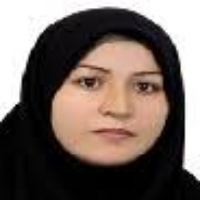Reflection of Religious and Cultural Beliefs of the Safavid Era in the Symbolism of the Paintings of Ibrahim Mirza’s Haft Awrang (with Emphasis on the Two Stories "Yusuf and Zuleykha" and "Leily and Majnoon")
Author(s):
Article Type:
Research/Original Article (دارای رتبه معتبر)
Abstract:
Symbolism is a cryptic and effective way of conveying meaning, handled by Iranian painters in different periods. During the Safavid period, the use of symbolic elements became more prominent with the recognition of the Shiite religion and the tendency of art workshops to portray mystical and religious themes. Among these workshops was the royal workshop of Prince Ibrahim Mirza in Mashhad, which is recognized both for its religious and cultural significance of Khorasan and for its illustration of magnificent manuscripts such as the Jami’s Haft Awrang. Ibrahim Mirza's Haft Awrang paintings are based on Jami’s stories and have different themes, such as the story of "Yusuf and Zuleykha" mentioned in the Qur’an and other books of the monotheistic religions, or the often told story of "Leily and Majnoon". It is reflected in Iranian literature and culture. The aim of this study is to comparatively examine the symbolism in the paintings of these two stories, to determine their relationship with the religious and cultural beliefs of this period, and to answer the following questions: 1. How were the culture and religious beliefs of the Safavid period reflected in the symbolism of the two stories? 2. What is the connection between the symbolism in the paintings of the two stories and religious and cultural beliefs of the Iranians during the Safavid era? The research method is comparative-analytical, and the information collection method is library research. We start with symbols classifications: One of the types of symbols classification is the placement of symbols into the type of human symbols and transcendent symbols, based on the theory of symbolism by Charles Chadwick (1996). "Human symbols" is a personal aspect of symbolism that can be considered the art of expressing thoughts and feelings by referring to how they are expressed by the artist; like a jar in Khayyam's poems. In this sense, it is the artist who brings a symbolic concept to the symbol and uses it in a certain sense in his works, and this requires the examination of all the works of an artist that are outside the scope of this study. But, in "transcendent symbolism" symbols are broad, general and ideally objective images of the world, of which the present world is only an incomplete representation, mystical symbols, and cultural symbols may be considered of this type. Transcendent religious symbols refer to religious content, and transcendental cultural symbols refer to literature and culture, and transcendent artistic symbols are derived from the principles of Iranian painting and elements of nature. We examine artistic symbols in two sub-categories of geometric and natural in 6 paintings of Haft Awrang. What can be deduced from the analysis of the research findings and the comparison of the two categories of painting is that the painters of Ibrahim Mirza’s Haft Awrang paid attention to the belief and culture of their period in the painting of religious and cultural content. The use of symbols such as the Ghezelbash Hat of the main characters of the story, Islimi, Greh, lotus, green and blue colors, mountain -tree, and the golden sky is in accordance with religious and cultural beliefs and principles. In response to the second question from the painting tradition of this period, despite the similarities in the use of some transcendent artistic symbols in both categories of painting originating from the Iranian painting tradition and originating from the seven principles of painting during the Safavids period, symbolism is different in the pantings of two stories. It is clear that in the Iranian painting tradition, symbols, like other nations, have a cultural and doctrinal basis, which is immortalized to express deep and cryptic concepts in the literature and culture of the nations. Therefore, the formation of principles based on this deep connection between religion and culture in the Iranian painting tradition has led to the use of some similar transcendent artistic symbols. As the winged angel and phoenix are combined symbols, rooted in the ancient myths of ancient Iran, and after Islam, under the influence of the common concepts of religions, the winged angel became a symbol for Gabriel and angels close to God, and phoenix found a sacred and spiritual role. Therefore, the painters paid attention to the religious and cultural context of the story in symbolism, and used symbols accordingly in their paintings. Despite the influence of religion and culture on each other and the art of the Safavid period, it can be said that some mythological symbols such as phoenix and dragon from the rich culture of ancient Iran remained strong and alive. The painters also used symbols like Lutus, Greh, etc. and they became the common ground and basic principles of Iranian painting. Some symbols such as the winged angel and the phoenix, retained their mythological forms, but took on a religious color and were used in a new sense.
Keywords:
Language:
Persian
Published:
Negareh journal, Volume:18 Issue: 67, 2023
Pages:
87 to 101
magiran.com/p2631712
دانلود و مطالعه متن این مقاله با یکی از روشهای زیر امکان پذیر است:
اشتراک شخصی
با عضویت و پرداخت آنلاین حق اشتراک یکساله به مبلغ 1,390,000ريال میتوانید 70 عنوان مطلب دانلود کنید!
اشتراک سازمانی
به کتابخانه دانشگاه یا محل کار خود پیشنهاد کنید تا اشتراک سازمانی این پایگاه را برای دسترسی نامحدود همه کاربران به متن مطالب تهیه نمایند!
توجه!
- حق عضویت دریافتی صرف حمایت از نشریات عضو و نگهداری، تکمیل و توسعه مگیران میشود.
- پرداخت حق اشتراک و دانلود مقالات اجازه بازنشر آن در سایر رسانههای چاپی و دیجیتال را به کاربر نمیدهد.
In order to view content subscription is required
Personal subscription
Subscribe magiran.com for 70 € euros via PayPal and download 70 articles during a year.
Organization subscription
Please contact us to subscribe your university or library for unlimited access!




